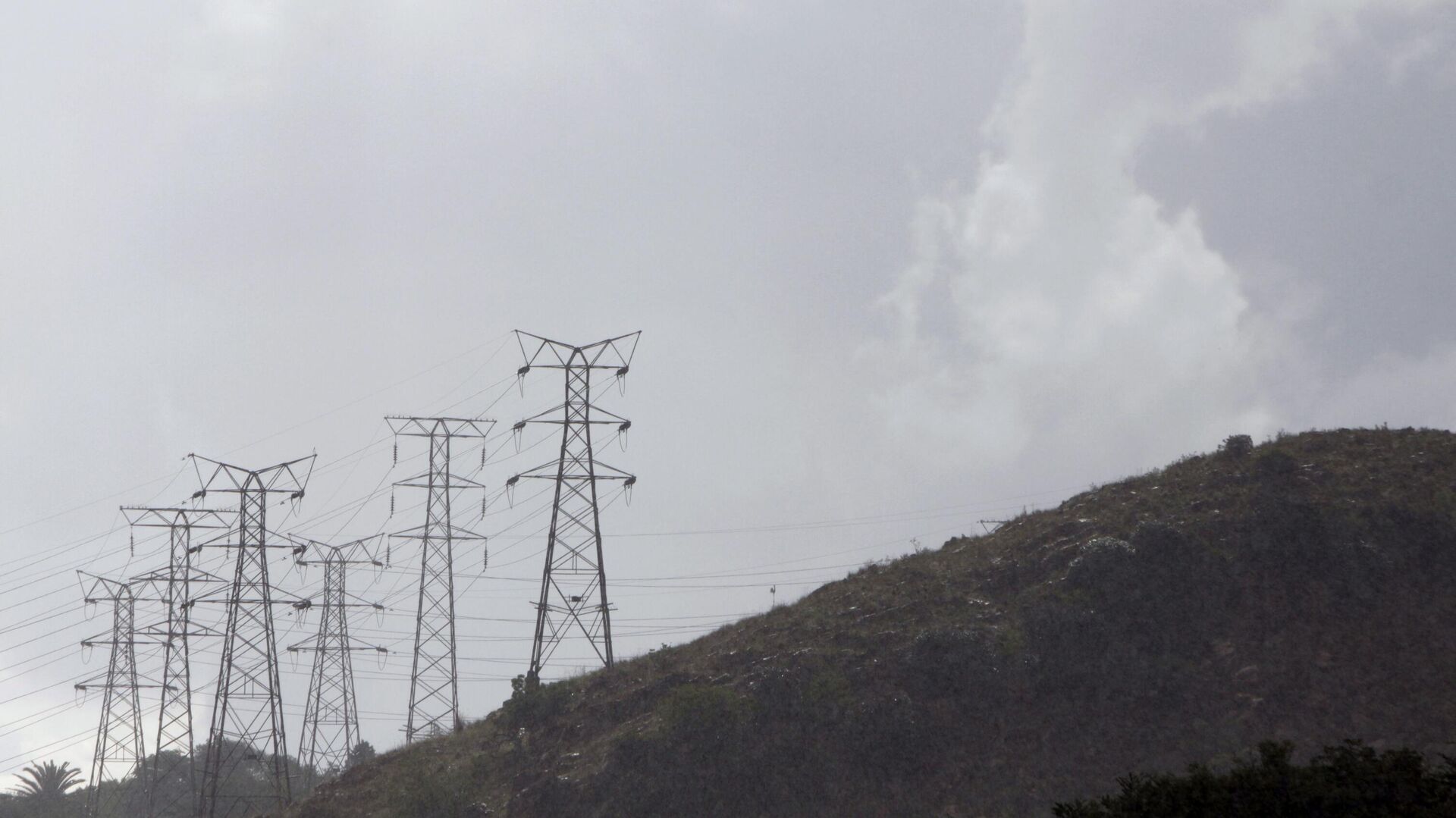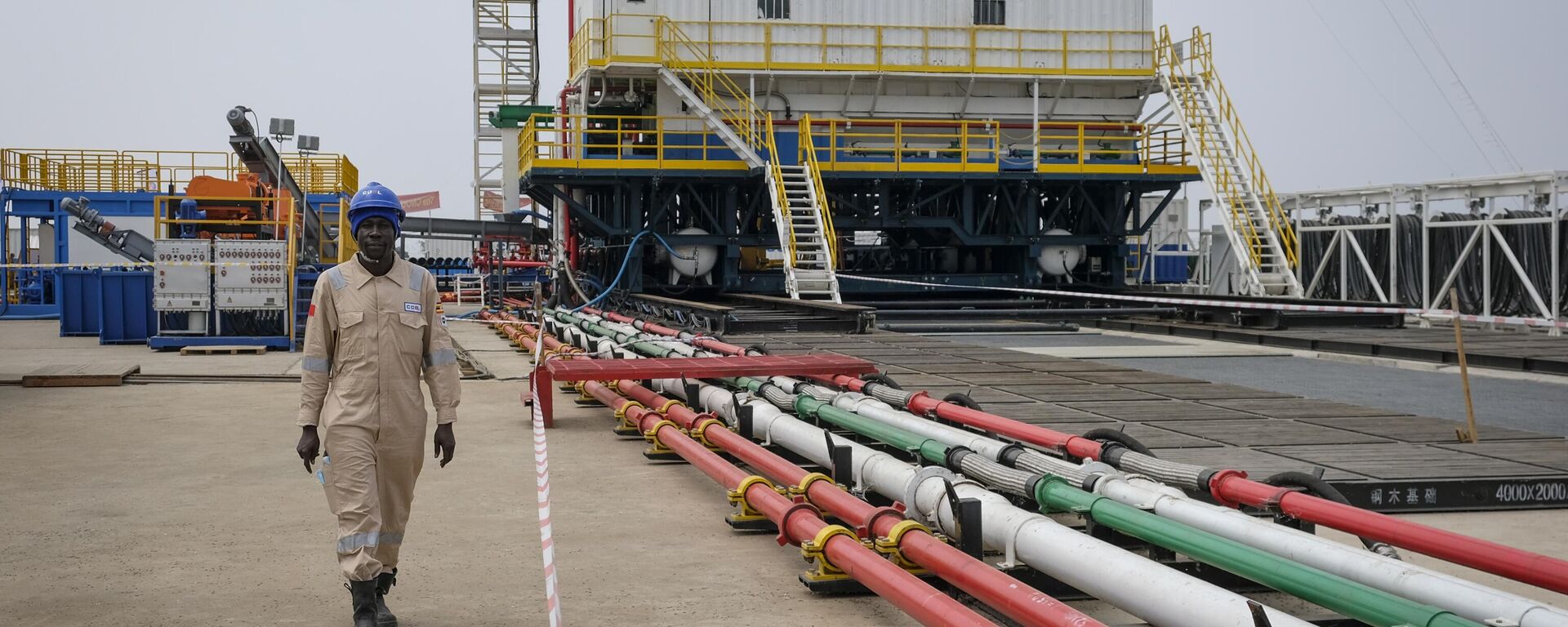https://en.sputniknews.africa/20240822/ethiopias-energy-exports-reached-140-million-in-recently-concluded-fiscal-year-1067968319.html
Ethiopia's Energy Exports Reached $140 Million in Recently Concluded Fiscal Year
Ethiopia's Energy Exports Reached $140 Million in Recently Concluded Fiscal Year
Sputnik Africa
Ethiopia's energy generation portfolio continues to be dominated by hydropower, which accounts for 96% of the total energy produced. Wind energy contributes... 22.08.2024, Sputnik Africa
2024-08-22T17:06+0200
2024-08-22T17:06+0200
2024-08-22T19:18+0200
sub-saharan africa
economy
tanzania
ethiopia
east africa
renewable energy
energy
export
grand ethiopian renaissance dam
electricity
https://cdn1.img.sputniknews.africa/img/07e7/05/0e/1059244380_0:353:3013:2047_1920x0_80_0_0_1a4ff68ad6438ee2f944f13f97a51ed5.jpg
Ethiopia's energy exports reached $140 million in the recently concluded fiscal year, marking a 16% increase from the previous year, according to the Ethiopian Electric Power (EEP) company.EEP CEO Ashebir Balcha, during a press briefing, attributed the growth to the increasing demand for energy, particularly from data mining, which contributed $27 million to the total export revenue.Looking ahead, EEP aims to generate over $260 million in energy exports during the current 2017 Ethiopian fiscal year (July 2024 – July 2025). The company is also focusing on expanding its energy exports regionally, with a transmission test to Tanzania scheduled to begin next month.Domestically, Ethiopia's energy demand continues to rise, increasing by 17% compared to the previous year. This growing demand is being met by increased production, particularly from the Grand Ethiopian Renaissance Dam (GERD).Operating with only two of its 13 turbines, GERD already contributed 17% of the total energy generated in Ethiopia's last fiscal year, 2016. With additional turbines coming into operation in the current fiscal year, the GERD is expected to significantly increase domestic energy supply.
https://en.sputniknews.africa/20240822/uganda-expands-oil-exploration-efforts-with-new-surveys-in-two-previously-undiscovered-regions-1067963223.html
tanzania
ethiopia
east africa
Sputnik Africa
feedback@sputniknews.com
+74956456601
MIA „Rossiya Segodnya“
2024
Muhammad Nooh Osman
https://cdn1.img.sputniknews.africa/img/07e7/04/0a/1058467512_0:0:1280:1280_100x100_80_0_0_ec723833bcbfcaed2e21952965ad99e4.jpg
Muhammad Nooh Osman
https://cdn1.img.sputniknews.africa/img/07e7/04/0a/1058467512_0:0:1280:1280_100x100_80_0_0_ec723833bcbfcaed2e21952965ad99e4.jpg
News
en_EN
Sputnik Africa
feedback@sputniknews.com
+74956456601
MIA „Rossiya Segodnya“
Sputnik Africa
feedback@sputniknews.com
+74956456601
MIA „Rossiya Segodnya“
Muhammad Nooh Osman
https://cdn1.img.sputniknews.africa/img/07e7/04/0a/1058467512_0:0:1280:1280_100x100_80_0_0_ec723833bcbfcaed2e21952965ad99e4.jpg
economy, tanzania, ethiopia, east africa, renewable energy , energy, export, grand ethiopian renaissance dam, electricity
economy, tanzania, ethiopia, east africa, renewable energy , energy, export, grand ethiopian renaissance dam, electricity
Ethiopia's Energy Exports Reached $140 Million in Recently Concluded Fiscal Year
17:06 22.08.2024 (Updated: 19:18 22.08.2024) Muhammad Nooh Osman
Writer/Editor
Ethiopia's energy generation portfolio continues to be dominated by hydropower, which accounts for 96% of the total energy produced. Wind energy contributes another 33%, while waste energy accounts for a small 0.2%. Other major hydroelectric projects, like Gibe III and Tana Belese contributed 34% and 9.6% respectively to the total energy generated.
Ethiopia's
energy exports reached $140 million in the recently concluded fiscal year, marking a 16% increase from the previous year, according to the Ethiopian Electric Power (EEP) company.
EEP CEO Ashebir Balcha, during a press briefing, attributed the growth to the increasing demand for energy, particularly from data mining, which contributed $27 million to the total export revenue.
Looking ahead, EEP aims to generate over $260 million in energy exports during the current 2017 Ethiopian fiscal year (July 2024 – July 2025). The company is also focusing on expanding its energy exports
regionally, with a transmission test to Tanzania scheduled to begin next month.
Domestically, Ethiopia's energy demand continues to rise, increasing by 17% compared to the previous year. This growing demand is being met by increased production, particularly from the
Grand Ethiopian Renaissance Dam (GERD).
Operating with only two of its 13 turbines, GERD already contributed 17% of the total energy generated in Ethiopia's last fiscal year, 2016. With additional turbines coming into operation in the current fiscal year, the GERD is expected to significantly increase domestic energy supply.



